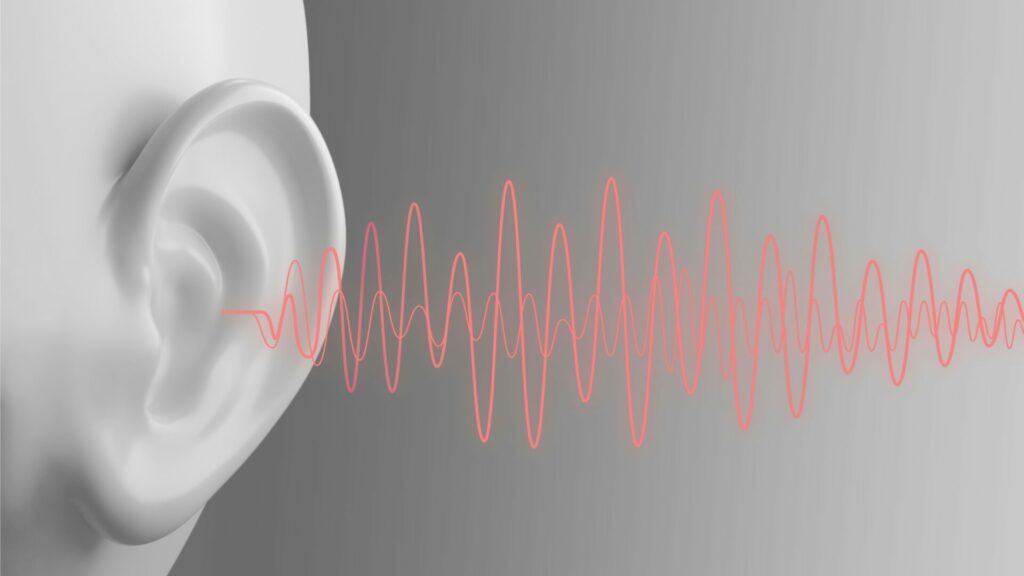
Acoustic insulation (also known as sound insulation or soundproofing insulation) is a material or a combination of materials designed to reduce the transmission of sound between spaces or to absorb sound within a space. Soundproofing insulation is typically dense and thick, and is most commonly installed in walls, but also serves a useful purpose in ceilings and between floors of multi-storey homes.
Difference Between Thermal and Acoustic Insulation
Thermal insulation helps control indoor temperatures and save energy, while acoustic insulation reduces noise for more peace and privacy. The main difference is that acoustic insulation has a higher density, making it much more effective at absorbing sound.
Most batt insulation, like glasswool, will do both jobs well. For example, if you get a standard R2.5 thermal glasswool batt, the thickness of it will help to dampen some sound, even though it’s not labelled as an acoustic batt. Similarly, an acoustic insulation batt will offer thermal insulation performance corresponding to it’s R-Value, giving you the best of both worlds.
How Sound Transmission Works
Sound transmission occurs when sound waves (created by vibrations) travel through a medium such as air, water or solids and reach a receiver.
These vibrations travel outward in all directions, and when these waves reach the receiver (e.g. the ear or a microphone), they cause it to vibrate, which is then converted into electrical signals for interpretation by the brain or electronic device.
1. Source of sound
First, there needs to be a sound. This could be anything that creates vibrations, such as a person speaking, a musical instrument playing or a car horn honking.
2. Vibrations
The source emits vibrations, which are rapid back-and-forth movements of molecules in the air (or other medium) around it. These vibrations create compressions and rarefactions in the air molecules, essentially forming sound waves.
3. Propagation
The sound waves travel outward in all directions from the source. This propagation occurs through the transfer of energy from one molecule to the next in the medium (air, water or solid).
4. Medium
The medium through which sound travels plays a significant role in its transmission. Sound travels faster in denser mediums because molecules are closer together, allowing for quicker transfer of energy. For example, sound travels faster in water than in air, and even faster in solids like metal.
5. Reception
When the sound waves reach the ear or a listening device, they cause the eardrum (or microphone diaphragm) to vibrate at the same frequency as the sound waves. These vibrations are then converted into electrical signals by the ear (or microphone) and transmitted to the brain (or electronic device) for interpretation.
6. Interpretation
Finally, the brain processes these electrical signals and interprets them as sound, allowing us to perceive and understand the original source of the sound.

How is Acoustic Insulation Density Expressed?
When we discuss density of an acoustic insulation product, we refer to kg/m³. The higher the number, the denser the product. A denser insulation material is better at absorbing sound.
Where Should I Install Acoustic Insulation in My Home?
The main rooms homeowners choose to install acoustic insulation are:
- Bedrooms. Installing acoustic insulation in bedroom walls can help reduce noise from neighbouring rooms or outside traffic, in addition to affording extra peace and privacy.
- Home office. If you work from home or have a designated office space, soundproofing the walls can minimise distractions from household activities or external noises, allowing you to focus better on your work.
- Home theatre or entertainment room. To create a high-quality audio experience without disturbing other household members or neighbours, opting for acoustic insulation in the walls surrounding your entertainment room will help contain sound within the space.
- Music room or studio. If you play musical instruments or enjoy recording music at home, soundproofing the walls of your music room can prevent sound leakage and improve the overall acoustics of the space.
- Bathrooms and Laundry. Improve privacy and stop the noise of your washing machine and tumble dryer from reaching every corner or your home.
- Playroom. If you have a designated play area for your children, soundproofing the walls allows kids to have fun without disturbing other household members, especially during early morning hours.
Internal vs. External Walls
Internal walls divide a building into smaller spaces and individual rooms. The exterior of external walls are typically made of brick, with the inside consisting of an insulated wood frame lined with plasterboard or a similar finish. Internal walls are normally just a timber frame with a plasterboard or similar finish on each side.
Ideally you’ll want a high R-value, thermal insulation in your external walls, and sound insulation within the internal walls. That said, if you live on noisy street, installing acoustic insulation in the external walls may be a wise investment.

Types of Acoustic Insulation
Acoustic insulation is necessary to control sound transmission in many environments, from residential homes to industrial spaces. Following is a summary of the most common materials used to insulate homes and buildings in Australia:
Fibreglass insulation
Fibreglass is one of the most common materials used for acoustic insulation. It’s made from fine glass fibres and is available in batts, rolls or loose-fill forms.
Mineral wool insulation
Mineral wool, also known as rock wool or stone wool, is made from natural minerals like basalt or diabase. It is similar to fibreglass insulation but has denser fibres.
Cellulose insulation
Cellulose insulation is made from recycled paper fibres treated with fire retardants. It is eco-friendly and offers good sound absorption capabilities. Cellulose insulation can be blown or sprayed into wall cavities, attics or floors.
Mass-loaded vinyl (MLV)
Mass-loaded vinyl is a dense, flexible material containing barium salts and plasticisers. It is highly effective at blocking sound transmission due to its mass and flexibility. MLV is often used as a barrier in walls, floors and ceilings to reduce noise from adjacent rooms or the outdoors.
Spray foam insulation
Spray foam insulation expands upon application, filling gaps and cracks to create an airtight seal. Open-cell spray foam provides good sound insulation and is commonly used in walls, ceilings and floors for both thermal and acoustic purposes.
Soundproofing membranes
Soundproofing membranes are thin materials installed under flooring or within walls to reduce impact noise, such as footsteps or vibrations. These membranes often consist of rubber or cork and help isolate sound transmission between floors or rooms.
Each type of acoustic insulation has advantages and disadvantages. Keep in mind that all bulk insulation (such as Bradford Gold and Knauf Earthwool) have some acoustic sound absorbing properties, even if they’re not labelled ‘acoustic’ or ‘soundproofing’.
Reach out to an insulation specialist if you need advice or assistance.
In Which Parts of the Building Can Acoustic Insulation Be Installed?
Walls are the primary pathway for sound transmission between rooms and between the interior and exterior of a building. With insulation installed in the walls, external sounds, such as lawnmowers, loud neighbours and busy traffic, will be dampened significantly. The sound of kids yelling in the playroom, a movie playing in the lounge room or the vacuum being used around the house will also be quieter where acoustic wall insulation has been installed.
Acoustic wall insulation should ideally installed when the house is being constructed or during renovations. Selecting the right material and insulation R-value before installation is vital. Replacing or topping the wall insulation up in the future will be a more costly exercise, so it’s best to get it right the first time.
Double or multi-storey buildings will benefit greatly from having acoustic insulation installed in the midfloor (i.e. between the floors) for privacy and general noise reduction.
If you’re disturbed by low flying aircraft or heavy rainfall on a metal roof then you might want to opt for acoustic insulation in your ceiling. However keep in mind that a proper level of thermal ceiling insulation will also make a noticeable difference compared to having no insulation at all.
Cafes, auditoriums and other similar venues will often use exposed acoustic insulation panels to reduce the echo and control the overall noise levels.
If you are looking for acoustic insulation installers in Sydney or Canberra, feel free to contact Amelior Insulation. We specialise in ceilings and underfloors and will install your acoustic insulation professionally to ensure optimal soundproofing.
